The Historia Augusta, a 4th century source by an unknown author, transcribes the words of the Emperor Hadrian facing death:
“Animula vagula blandula,
hospes comesque corporis
Quae nunc abibis in loca
Pallidula rigida nudula
Nec ut soles dabis iocos”
(Historia Augusta, Adriano)
“Little soul, gentle and drifting,
guest and companion of my body,
now you will dwell below in pallid places
stark and bare;
there you will abandon your play of yore.”
Translation by Marguerite Yourcenar in collaboration with Grace Frick
When we talk about the Roman emperors the first things that come to our mind are harsh men, interested in politics and military conquest. But what about Hadrian and this short epigram? His graceful words surprise us, caressing the fragility of the human being. There is no harshness of law here, the brilliance of a military eulogy or the memory of great exploits. Hadrian’s words are spontaneous and quietly subject to an ineluctable destiny, they remind us that he was foremost a man.
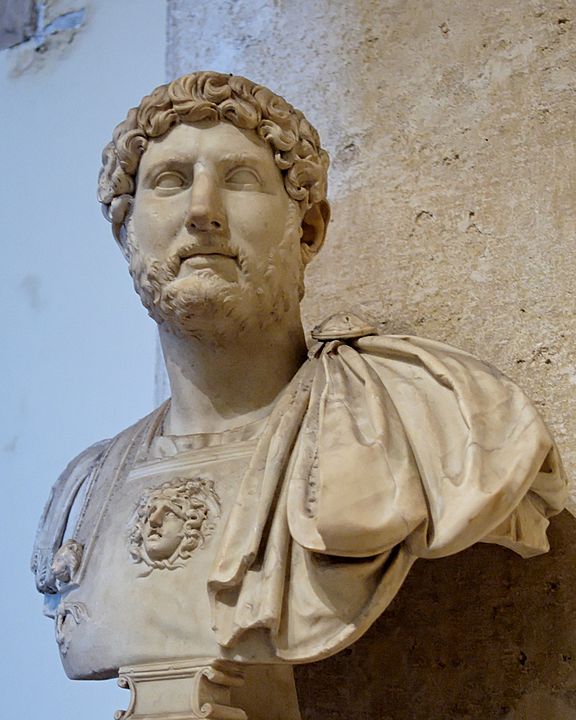
Hadrian’s personality
Historiographical sources often describe only the traits of a narcissist. Hadrian was not really understood by his contemporaries and his personality is difficult to read.
He was, in the same person, austere and genial, dignified and playful, dilatory and quick to act, niggardly and generous, deceitful and straightforward, cruel and merciful, and always in all things changeable.
Historia Augusta, The Life of Hadrian, 14, 11
The Historia Augusta celebrates Hadrian’s extraordinary intellectual abilities, his passion for art and literature, but it also points outs his inconstant character, always in all things changeable. Hadrian’s entire life is marked by seemingly contradictory episodes. For example, “He forbade masters to kill their slaves, and ordered that any who deserved it should be sentenced by the courts” [1] but at the same time Cassius Dio reports that the Emperor could condemn to death whoever contradicted him [2].
The gourds of Hadrian
A tragic example is the death of the famous architect Apollodorus of Damascus. Apollodorus made important constructions for Trajan, Hadrian’s adoptive father, including the Markets, the Baths, the Forum with the famous Trajan’s Column in Rome. For Hadrian he rebuilt the Pantheon, after the previous building had been damaged in 110 AD. However, disagreements soon arose between the two. Hadrian had the aspiration to become an architect worthy of admiration. Moreover, the historian Aurelius Victor tells us that the Emperor “mastered not merely rhetoric, but other disciplines, too, the science of singing, of playing the harp, and of medicine, a musician, geometrician, painter, and a sculptor from bronze or marble […]” [3]. Nevertheless, Hadrian and Apollodorus of Damascus did not share the same vision of architecture at all:
“once when Trajan was consulting him (Apollodorus) on some point about the buildings he had said to Hadrian, who had interrupted with some remark: “Be off, and draw your gourds. You don’t understand any of these matters.” When he became emperor, therefore, he remembered this slight.
Cassius Dio, Roman History
The condemnation of Apollodorus of Damascus
The gourds were domes that Hadrian had made and was proud of. When he became emperor, he did not tolerate the disapproval of Apollodorus. The ancient disagreements re-emerged because of the huge Temple of Venus and Roma. Cassius Dio reports that Apollodorus, upon seeing the plans for the cult statues made by Hadrian, exclaimed “For now, if the goddesses wish to get up and go out, they will be unable to do so”. Hence, “the emperor was both vexed and exceedingly grieved because he had fallen into a mistake that could not be righted, and he restrained neither his anger nor his grief, but slew the man” [2].
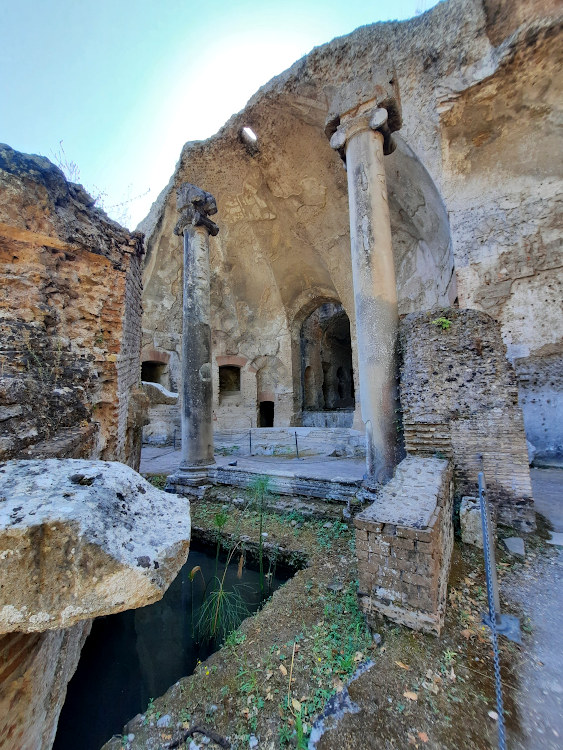
In poetry and in letters Hadrian was greatly interested. In arithmetic, geometry, and painting he was very expert. Of his knowledge of flute-playing and singing he even boasted openly […]. He was also a connoisseur of arms, had a thorough knowledge of warfare, and knew how to use gladiatorial weapons.
Historia Augusta, Life of Hadrian, 14, 8-10
The rise to power
Hadrian was born in 76 AD, perhaps in Hispania in Italica near Seville. Hadrian’s father was a cousin of Trajan, and when the young man was orphaned at the age of ten, he was given to him in foster care. Plotina, the wife of his adoptive parent and future emperor, contributed to his growth. In the retinue of Trajan Hadrian reached all the positions of the corsus honorum and, when the ruler died, succeeded him to the throne of the Empire.
He lived 62 years, 5 months, 17 days. He ruled 20 years, 11 months. He was tall of stature and elegant in appearance; his hair was curled on a comb, and he wore a full beard to cover up the natural blemishes on his face; and he was very strongly built. He rode and walked a great deal and always kept himself in training by the use of arms and the javelin.
Historia Augusta, Life of Hadrian
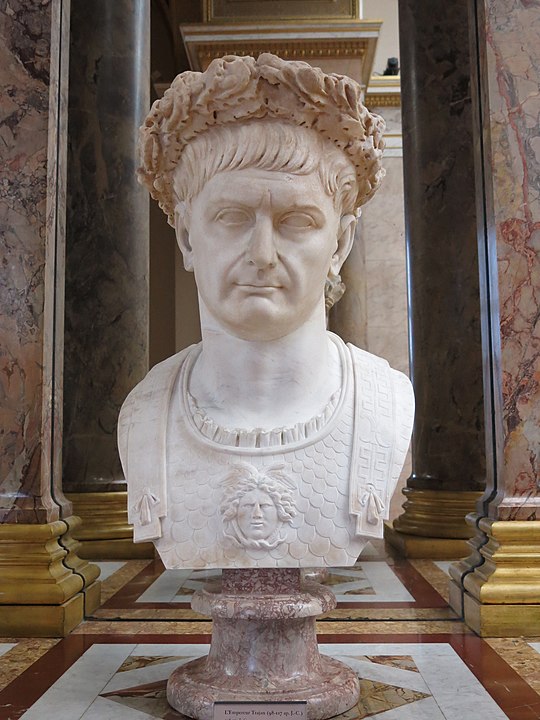
The role of Plotina
Since the election of Nerva in 96 AD, the line of adoptive emperors had begun: succession to the throne was no longer by family but by legitimate adoption. Although the adoption of Hadrian by Trajan may seem obvious, the slightly later historiographical sources cast doubt on its validity. In fact, it was claimed that Plotina had planned a conspiracy to facilitate the ascension to the throne of the new emperor. Cassius Dio reports that:
[…] the death of Trajan was concealed for several days in order that Hadrian’s adoption might be announced first. This was shown also by Trajan’s letters to the senate, for they were signed, not by him, but by Plotina […].
Cassio Dio, Roman History
A similar argument is also presented in the Historia Augusta:
There was, to be sure, a widely prevailing belief that Trajan, with the approval of many of his friends, had planned to appoint as his successor not Hadrian but Neratius Priscus,even to the extent of saying to Priscus: “I entrust the provinces to your care in case anything happens to me”. And, indeed, many aver that Trajan had purposed to follow the example of Alexander of Macedonia and die without naming a successor. […].
And the statement has even been made that it was not until after Trajan’s death that Hadrian was declared adopted, and then only by means of a trick of Plotina’s; for she smuggled in someone who impersonated the Emperor and spoke in a feeble voice.
Historia Augusta, Life of Hadrian
Hadrian and the aeternitas of Rome
Hadrian reigned from 117 to 138 AD. He had an exceptional life, making himself an interpreter of Rome’s essence, religiosity, customs and arts. In particular, he exemplified the welcoming nature of Rome and its cultural and social integration. For Hadrian, Rome was not only the capital of a vast empire, but it was also in the suburbs, in the farthest provinces, in the limes to be defended and consolidated. Rome was in its multiple dimensions, peoples and cultures.
Hadrian’s personality was dominated by a great love for art, poetry and literature. In particular, he was known for his passion for Hellenism, and during his youth he was nicknamed with the unflattering nickname of greculus. Upon becoming emperor, he sought to unify the empire through his cultural knowledge.
Hadrian conceived his government as a community of sharing, panhellenism and legal certainty. He tried to conquer the world not by weapons, that inflict death and destruction – even though he was a good general – but by the beauty of arts and pleasures. If everyone had wished to adopt the lifestyle of Rome and enter the Empire, there would have been no need to fight. For this reason, Hadrian spent most of his efforts in promoting the customs and habits of Rome, of an existence based on comforts and advantage of being Roman.
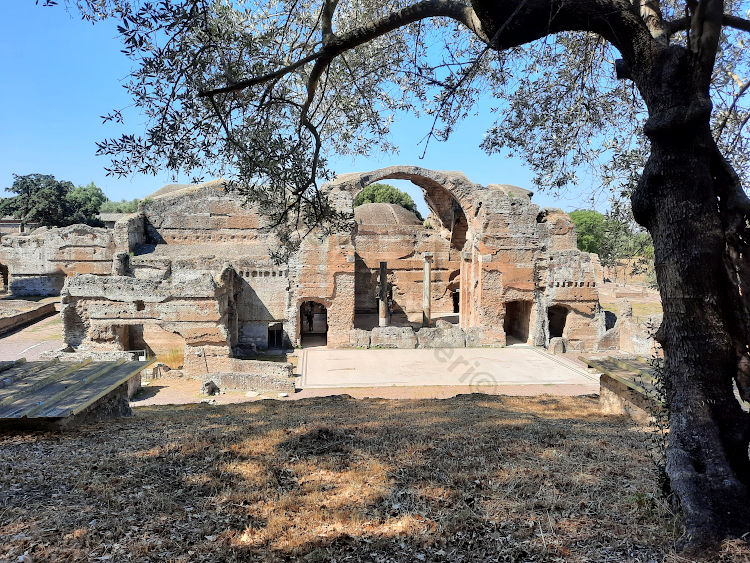
Hadrian’s policy of peace
Hadrian’s policy aimed at border defense rather than conquest. He renounced many of the possessions conquered by Trajan, considering them indefensible or counterproductive to maintain. In Mesopotamia he withdrew troops, in Britain he built the famous Wall to defend the limes from Picts tribes. At the same time, although limiting Rome’s expansionism, he reformed the army for peacekeeping. Hadrian preferred the aeternitas of Rome to the utopia of an imperium sine fine, characteristic of the policies of Trajan and before him of Alexander the Great. Rome was expected to be a bulwark of civilization in the following centuries by the security of its borders and the political stability.
The propaganda of Romanity was also expressed by the figure of the emperor himself: we have about one hundred and fifty marble and bronze portraits of Hadrian. They, either loricated or as pontifex maximus, show the emperor with a beard and curls on his forehead, in accordance with Greek custom. The representations betray a stylistic influence of Flavian age derivation and a dry, stern face. In the sculptural portraits, Hadrian is represented in the act of thought, with furrowed eyebrows according to the example of the Pliny’s torvitas.
Animula vagula blandula, Hadrian’s spiritual and material quest
Animula vagula blandula is the farewell before crossing the threshold, of undertaking a final and uncertain journey. Hadrian recognized the soul as the ultimate principle of intellect that survives the body, but without which it is lost in an unknowable dimension, “stark and bare.” He conceived existence as a profound spiritual quest. His passion for Greek art and philosophy led him to Athens where he had already received the city’s highest office, the archon, and where in 125 he was initiated into the Eleusinian mystery cults of Demeter and Persephone.
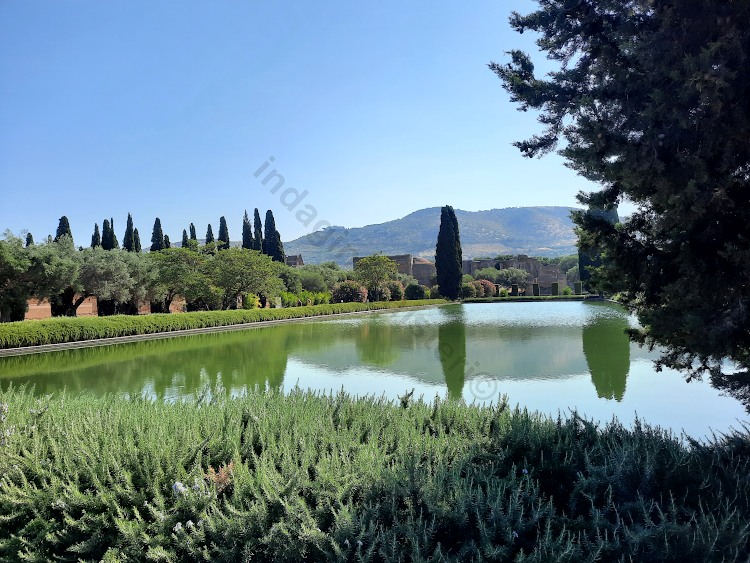
In Rome he was a promoter of the cult of origins, but he also tolerated different beliefs. Hadrian considered that the Empire needed to memorialize its past, associated with the heroic story of Romulus and the pagan religion, but also to open itself to new perspectives and philosophies of existence. Thereby Rome was to be celebrated in its divine sphere, the inclusive recipient of all cults and all deities. This attitude is reflected as in the rebuilding of the Pantheon as in the majestic temple of Venus in Rome.
The Pantheon
The term Pantheon means “common to all the gods” and it is noteworthy that its most famous and complete reconstruction was due to Hadrian. An early temple building was founded by Marcus Vipsanius Agrippa, son-in-law of Augustus, in 27 BC. However, after several fires had damaged it in 80 and 110 AD, it was completely rebuilt (112-124). Although Agrippa’s early temple was rectangular in plan, the Pantheon acquired new forms and an innovative spatiality with Hadrian’s reconstruction. Apollodorus of Damascus, the architect of the temple, planned an octastyle pronaos connected to a large dome cella by the portico.
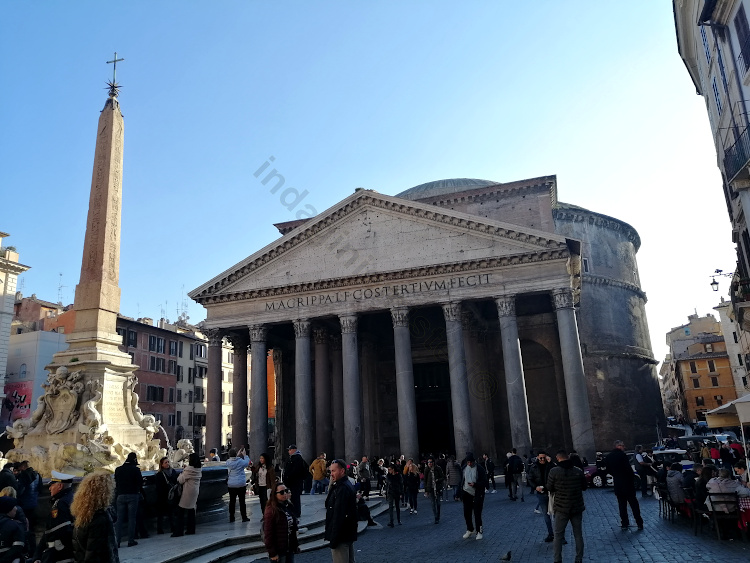
A universal temple
A perfect sphere 43.44 m in diameter is inscribed inside the building, which is entirely covered with colored slabs and marble. The sphere forms a dome featuring panels known as coffers, numbering twenty-eight, which opens an oculus at the top. This geometric figure symbolizes a cosmic temple, since the sphere represents the harmony of the whole. The oculus is the only source of light in the building and ideally connects the Pantheon directly with heaven, the Earth with the Universe. Hadrian wanted a temple dedicated to all gods, not just those of Rome’s religiosity, which embraced humanity in its entirety.
The interior of the Pantheon is developed along a wide cylinder on two levels. At the level of the ground are six large niches, marked by pilasters and aedicules with porphyry columns and tympanums, while the upper level features blind windows. The niches, there is another one contained at the entrance, hosted the planetary deities Venus, Saturn, Jupiter, Mercury, Mars, the Sun and the Moon.
I wanted this sanctuary of all gods to represent the globe and the celestial sphere, a globe within which the seeds of eternal fire are enclosed, all contained in the hollow sphere.
Marguerite Yourcenar, Memoirs of Hadrian
Hadrian and the project of the Temple of Venus and Roma
Hadrian’s willingness to celebrate the cult of origins and, at the same time, to consider Rome as an ecumenical deity was evident in the temple he designed and inaugurated in 135. He planned the largest cult building in the entire city: the temple of Venus and Roma was placed in the historic heart of the empire, on a podium near the Forum and just in front of the Colosseum. The building was constructed on the area where the atrium of the Domus Aurea stood with the famous Colossus of Nero, which was relocated and consecrated to the solar deity for the occasion.
The temple of Venus and Roma had a peristyle consisting of more than two hundred columns. Inside, the building contained two cellas set opposite each other. They housed the statues of the most important deities as Hadrian thought: Venus Felix, who according to myth was the mother of Aeneas and the progenitor of the gens Iulia, as Julius Caesar claimed; and Roma Aeterna, the personification of the Roman state.
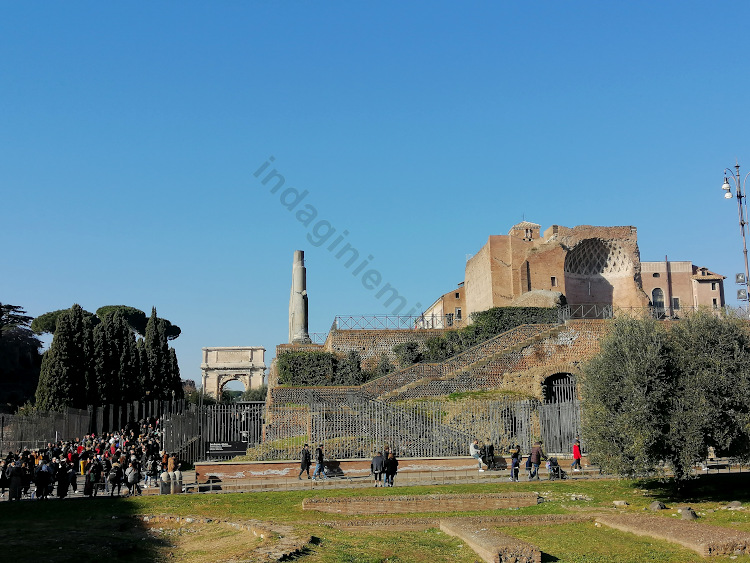
Antinous, the lost love
Hadrian’s spiritual quest can be compared to a fascinating journey. Tertullian called him omnium curiositatum explorator [4]. This dimension of travel manifested both through philosophy and in a real wandering along the borders of the Empire.
So fond was he of travel, that he wished to inform himself in person about all that he had read concerning all parts of the world.
Historia Augusta, Life of Hadrian
Hadrian meets Antinus
During a visit to Bithynia in 123 Hadrian met a thirteen-year-old youth and became infatuated with him. Although such a relationship could seem scandalous to us today, it was instead commonly in use in ancient Greece from which the emperor was inspired. Pederasty was the relationship between two men of different ages that was carried out by highly codified ritual forms.
Hadrian’s penchant for luxury and lasciviousness sparked many hostile rumors about his libertinism and his ardent passion for his famous page Antinous.
Aurelius Victor, Epitome de Caesaribus
Antinous was a fundamental presence for Hadrian both spiritually and erotically. Some authors, including Lambert [5], emphasized how the companionship of the young man was necessary for the emperor’s psychic equilibrium. Moreover, historical sources point out that Hadrian had a very bad relationship with his wife Sabina, whom he called morosa et aspera (capricious and intractable) [6].

Antinous remained in the Emperor’s retinue until 130 when, while sailing on the Nile, he fell into the river and drowned. This event profoundly marked Hadrian’s life, and from that moment on he soured his character.
During a journey on the Nile he lost Antinous,his favourite, and for this youth he wept like a woman. Concerning this incident there are varying rumours; for some claim that he had devoted himself to death for Hadrian, and others — what both his beauty and Hadrian’s sensuality suggest.
Historia Augusta, Life of Hadrian
Antinous’ death, an unsolved mystery
Antinous’ death raised numerous questions already at the time. It has never been clarified whether the young man drowned due to a trivial accident, or if his death was related to more obscure reasons. Indeed, Hadrian reacted with a suspicious behavior: he established that Antinous was deified and worshipped throughout the Empire. The city of Antinopolis was built on the site of his death, and even a flower and a star were named after the young man. Sculptural depictions of Antinous became more numerous, for example in the guise of Bacchus or Apollo.
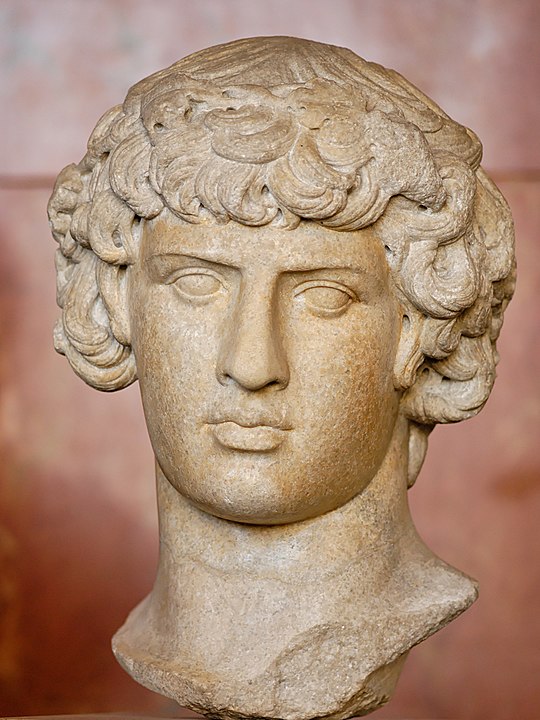
The boy was represented as the Egyptian god Osiris whom, according to myth, died by drowning in the Nile and was brought back to life by Isis and her sister Nephthys. The similarity between the myth and the tragic event suggests that it could be more than an accident. Aurelius Victor relates that the reason was that Hadrian wanted to extend his life, then he asked for a volunteer to sacrifice for him; everyone recoiled except Antinous. This could explain the honors dedicated to him. Antinous’ death could be a ritual, based on the Osiris myth, that was intended to prolong the emperor’s life.
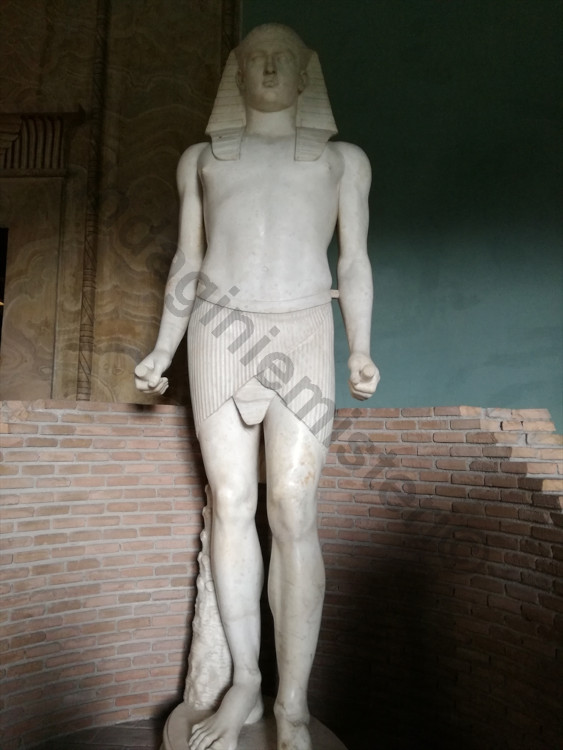
Finally, it was claimed that Antinous was murdered, perhaps at Sabina’s behest, to prevent him from becoming the heir to the imperial throne.
Hadrian’s Villa
For Hadrian, the material aspect of the existence, which was expressed through love relationships and manifested in comforts, luxuries and villas, had the same worth as the spiritual. The two aspects were considered intimately linked, since the soul without the body is ” little, drifting”.
“Afterwards he sailed to Sicily, and there he climbed Mount Aetna to see the sunrise, which is many-hued, they say, like the rainbow”.
Historia Augusta, Life of Hadrian
An icon of otium was the stunning villa that the emperor designed and commissioned to be built in Tibur. Hadrian’s Villa was a sort of compendium, ideally enshrining the ultimate essence of Rome. It housed a corpus of buildings covering an area of about 120 hectares and recalling the places visited by Hadrian throughout the provinces of the Empire.

His villa at Tibur was marvellously constructed, and he actually gave to parts of it the names of provinces and places of the greatest renown, calling them, for instance, Lyceum, Academia, Prytaneum, Canopus, Poecile and Tempe. And in order not to omit anything, he even made a Hades.
Historia Augusta, Life of Hadrian
The buildings of Hadrian’s Villa
At Hadrian’s Villa it is still possible to admire the Canopus, a reproduction of the eponymous branch of the Nile near the Delta; the Pecile, which took its inspiration from the stoà poikìle: this was the painted portico of Athens at which political and cultural activities took place; and the Antinoeion, a place of worship dedicated to the memory of Antinous.
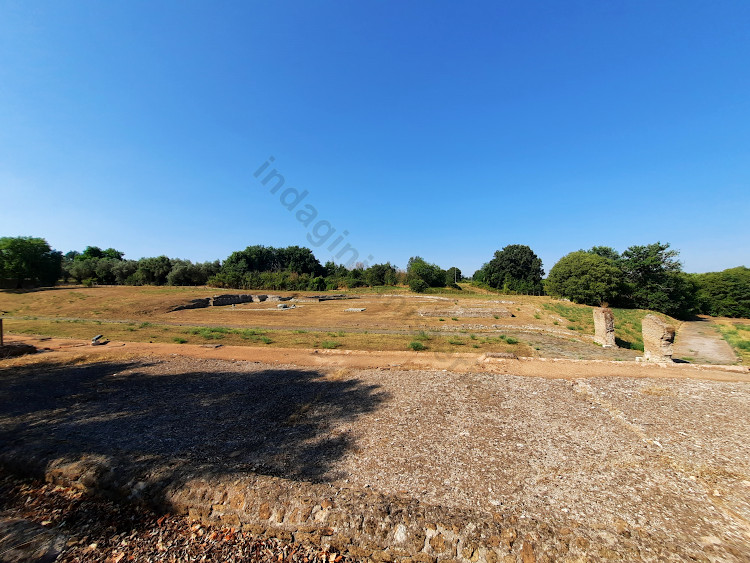
The Maritime Theater, so named because of the presence of a round portico with a ring-shaped pool, was the Emperor’s residence. There were also buildings for recreation such as a Greek theater, a hippodrome, and the Small and Great Thermae. To serve the purposes of study and cultural enhancement Hadrian built a meeting hall, known as Philosophers’ Hall, and several libraries. Worship services were held in the temples of Venus and Apollo.
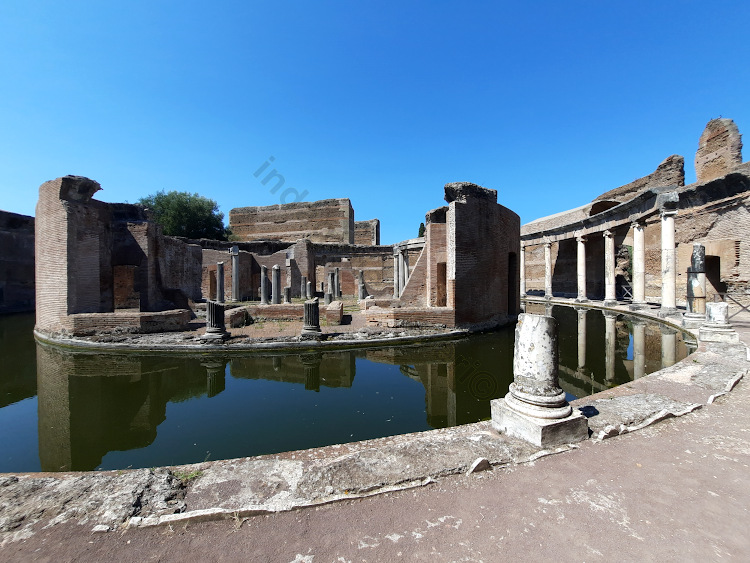
The heritage of Hadrian
Hadrian had a huge funerary mausoleum built in Rome, now Castel Sant’Angelo, but chose to be buried in Baia. The emperor passed away on July 10, 138, at the age of 62, after ruling for about 21 years. His personality changed the course of history, and it is because of historical figures like Hadrian that we understand the importance of art, literature, cultural integration, and peace. Marguerite Yourcenar has written an impassioned, though sometimes fictionalized, autobiography that has had the merit of focusing the debate on the man Hadrian [7].
I felt responsible for sustaining and increasing the beauty of the world I desired that the might and majesty of the Roman Peace should extend to all, insensibly present like the music of the revolving skies.
Marguerite Yourcenar, Memoirs of Hadrian

Indeed, we all often forget that behind the facts of history, and the historiographical sources, lies the humanity. Thus it happens that the imposing figure of an emperor could conceal from the posterity’s memory an animula vagula blandula.
Samuele Corrente Naso
Notes
[1] Historia Augusta, Life of Hadrian, 18,7, published in the Loeb Classical Library, 1921.
[2] Cassio Dione, Roman History, LXXII 23, LXIX 1,3, LXIX 10.
[3] Pseudo-Aurelio Vittore, Epitome de Caesaribus, XIV 8.
[4] Tertulliano, Apologeticum, V, 197.
[5] Royston Lambert, Beloved and God: The Story of Hadrian and Antinous, London, Weidenfeld & Nicolson, 1984.
[6] Historia Augusta, Life of Hadrian, 11,3
[7] Marguerite Yourcenar, Memoirs of Hadrian, Farrar, Straus & Giroux Inc, 2005.

